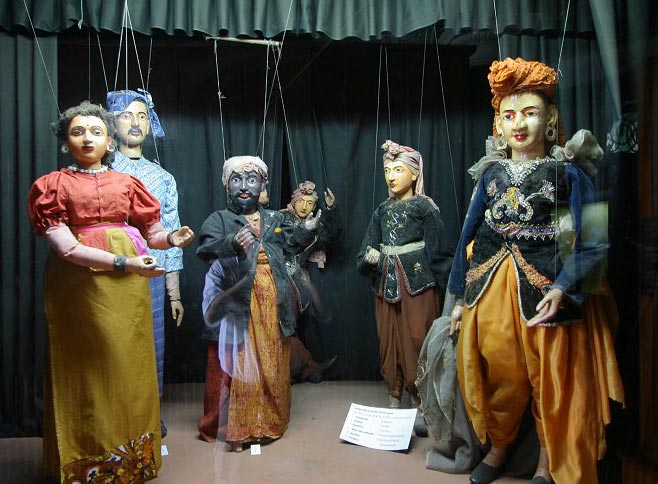
The traditional arts of mask making and puppetry cling to their last refuge in Ambalangoda in the South. Here a few families of traditional artisans do their best to preserve their craft, livelihood and legacy. Masks produced by Ambalangoda artisans fall into three categories: ‘Kolam’, ‘Raksha’ and ‘Sanni’. The origins of Raksha and Sanni masks run far into history.
Rakshas are exotic demons, with bulging eyes and bloodthirsty, protruding tongues. Some are crowned with seven-headed serpents and others have parrot-like beaks of ‘gurulas’ (a race of mythical birds). All have been carved and brilliantly lacquered to produce a striking effect, with something majestic about them despite their demonic nature. These Raksha masks are used in festivals and ceremonies.
The Sanni masks are more distorted and disturbing. There are 18 of them, each mask an embodiment of a particular ailment, as ‘sanni’ is essentially an exorcism ritual. There is one for vomiting and stomach diseases, one for temporary insanity and one for nightmares.
Kolam, the last category, was born during the colonial period. They are satires, and hit out at that early colonial society in subtle, refined ways. When they were conceived, the masks may have appeared funny, but to us today, with their fixed stares, bulging eyes and ghastly smiles they look sinister.


Ambalangoda masks are carved out of the light, Balsa-like Kaduru wood. Before the carving begins, the wood is smoke-dried for a week.
Then work begins with chisel and mallet. Both in carving and painting, the artisan obeys ancient scriptures, which give stringent guidelines.
Puppetry, or rukada, was not born in Ambalangoda, but it was in this town the craft reached its supreme height in Sri Lanka. Podi Sirina Gurunnanse was a legendary puppeteer of Ambalangoda. It was Gurunnanse who produced the Ehelepola play, based on the tragic story of the aristocratic family.
At the peakof his career, he performed before the Duke of Edinburgh, Queen Victoria’s son, when he visited Ceylon in the late 19th century. A cast of 47 puppets was used in the performance, and the royal duke gave Gurunnanse a gold medal and a cash prize of five hundred rupees.
